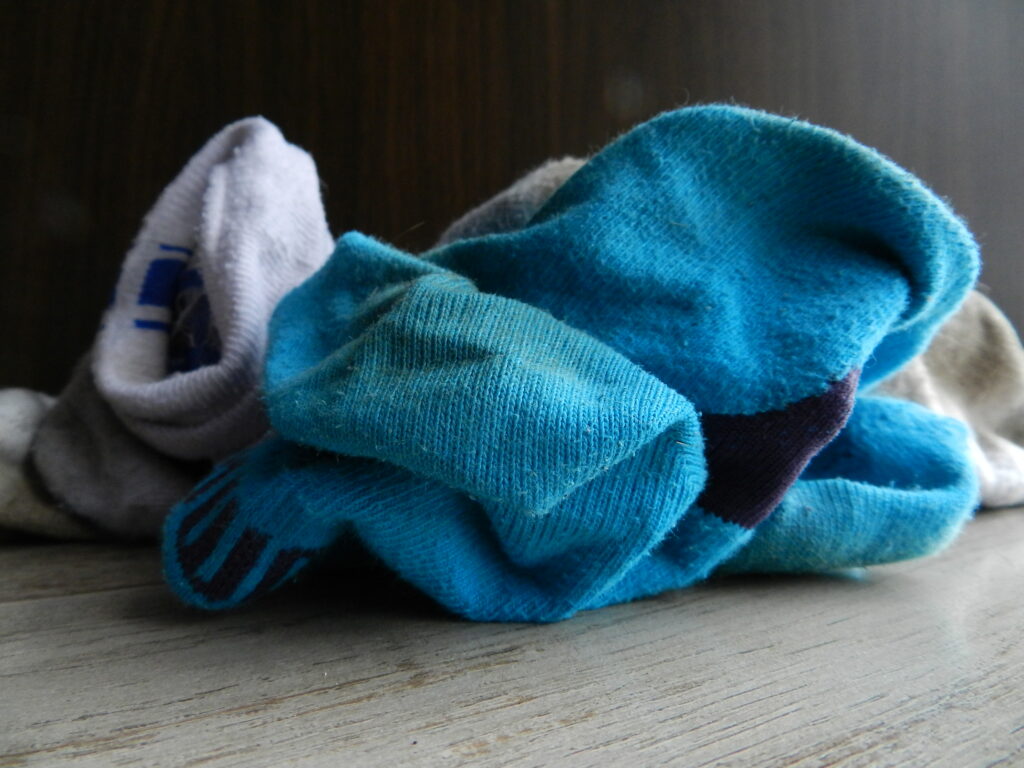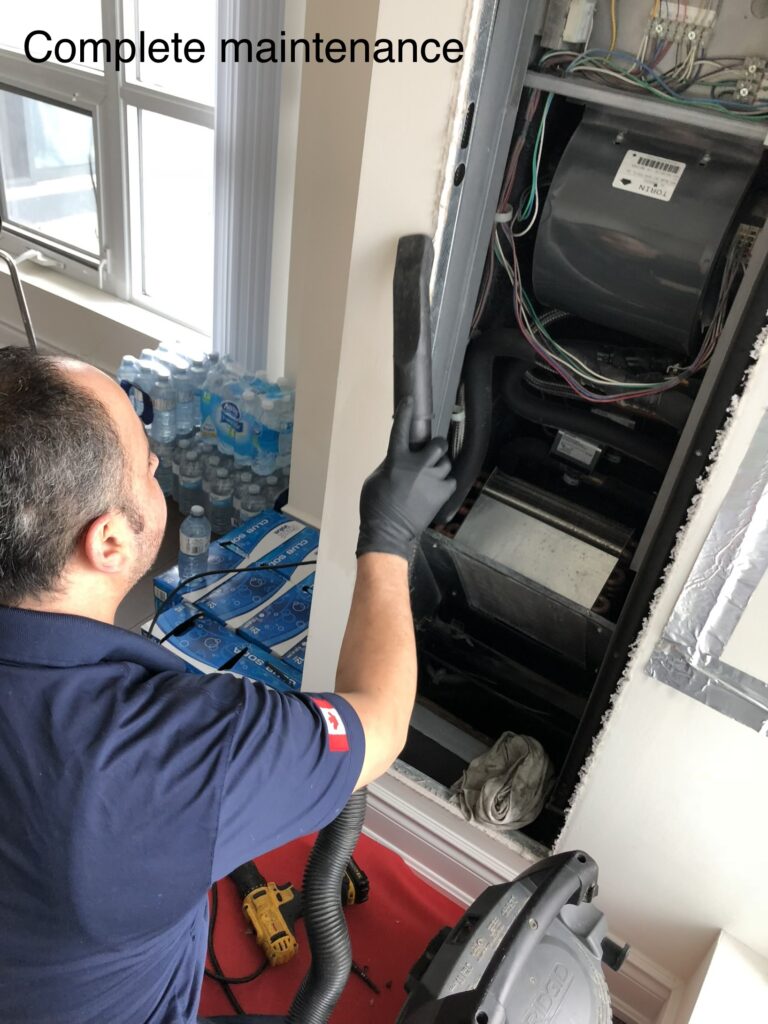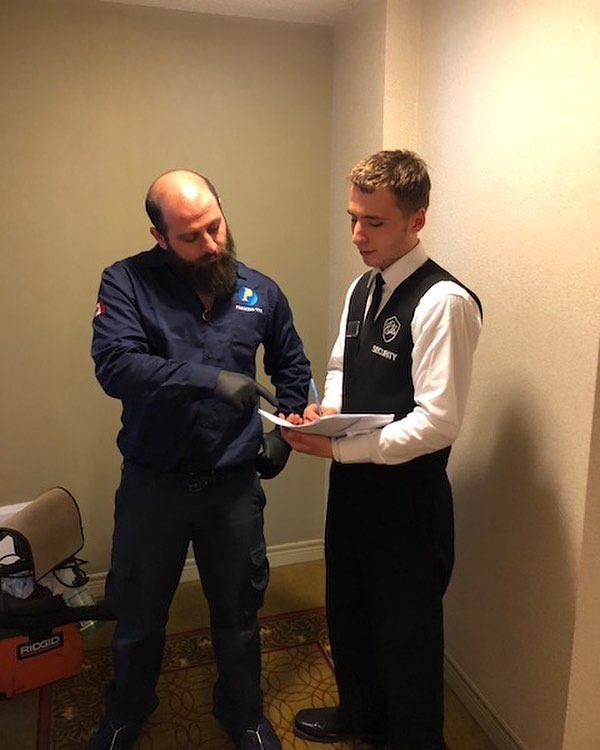Dirty Sock Syndrome, what is that?
Dirty Sock Syndrome might seem like an issue related to laundry, but it’s actually entirely related to HVAC systems. This term describes the musty odor that comes from HVAC units when they first start up. Often resembling a mold or mildew scent, this phenomenon is common in spring in certain regions but can occur at any season.
Key Signs to Watch For:
- Unpleasant Smells
- Lower Airflow
- Diminished Efficiency in Cooling/Heating
What’s the reason of Dirty Sock Syndrome:
Growth of Mold and Microbes:
Your air conditioning’s evaporator coils can gather dust and dirt which, combined with moisture, form the perfect breeding ground for mold and microbes. These organisms emit volatile organic compounds (VOCs), leading to the distinctive musty odor.
Bacterial Infestation:
The damp and filthy conditions of the coils don’t just favor mold. Bacteria also find a hospitable environment here, adding to the nasty smell that’s characteristic of Dirty Sock Syndrome.
Here are four environmental conditions that exacerbate Dirty Sock Syndrome in HVAC systems:
Elevated Humidity Levels:
High humidity contributes to increased moisture in the air, creating a more hospitable environment for mold, bacteria, and other microbes on evaporator coils, which can amplify the musty odors characteristic of Dirty Sock Syndrome.
Inadequate Airflow:
A lack of proper ventilation within an HVAC system can result in stale air and hindered airflow. This limited movement of air can prevent the natural dissipation of smells and encourage the build-up of humidity, dust, and other particles, all of which are factors that worsen Dirty Sock Syndrome.
Intermittent HVAC Use:
The times when heating and cooling systems are used sporadically, such as during the change of seasons, can lead to the accumulation of moisture on the coils due to infrequent use. When the system kicks back into gear, this moisture interacts with accumulated dust and debris, contributing to the production of foul odors.
Available Nutrients for Microorganisms:
For mold and bacteria to flourish, they need nutrients, which are plentiful in the form of dust particles and organic materials found within HVAC systems. These substances feed microbial growth, leading to stronger and more offensive odors.
While Dirty Sock Syndrome might be a nuisance, it’s generally not harmful to your health. Most individuals are not adversely affected beyond being bothered by the smell. However, Dirty Sock Syndrome could pose risks to those with respiratory conditions. Studies, including those by the NIH, have found a clear correlation between mold, damp conditions, and various allergic and respiratory issues. Thus, for individuals with serious allergies or asthma, the presence of mold and bacteria in the air can significantly impact their health.
Addressing Dirty Sock Syndrome is usually straightforward, involving some cleaning and preventive maintenance, which we’ll cover shortly.
To combat Dirty Sock Syndrome, follow these practical steps:
- Conduct a thorough inspection and cleaning of the evaporator coils, return box, drain pan, and blower wheel within your air conditioning unit. If you’re unfamiliar with these components, consult online resources or diagrams specific to your model for guidance.
- Replace your air filter regularly to capture potential contaminants circulating in your HVAC system.
- Maintain the cleanliness of your condenser coils system.
- Install a UV light to shine directly on the evaporator coils, preventing the growth of mold, microbes, and bacteria.
- Clean your ductwork or enlist professional cleaning services to ensure that your home’s airflow is not impeded.
- For persistent or severe cases of Dirty Sock Syndrome, consider using a disinfectant specifically designed for HVAC systems to reduce microbial presence.
Embrace the Benefits of Premier One’s Maintenance Program:
Premier One’s maintenance program offers a proactive approach to HVAC care, designed to avert issues like Dirty Sock Syndrome. When you join the program, you’ll benefit from regular inspections and maintenance performed by skilled technicians. These preventative services are crucial for detecting and mitigating sources of mold and microbial growth, such as unclean evaporator coils, thus preventing foul odors.
The maintenance program provided by Premier One is your ticket to a well-maintained, efficient HVAC system. Not only does it help prevent the occurrence of Dirty Sock Syndrome, but it also ensures that your system runs smoothly, offering you comfort and reliability.
Prevent Dirty Sock Syndrome with Premier One
Battling with the unpleasant effects of Dirty Sock Syndrome doesn’t have to be part of your routine. With insight and the right preventive strategies, you can tackle this issue head-on.
Reach out to Premier One to explore their maintenance program and take decisive action against Dirty Sock Syndrome. Embrace the comfort of odor-free, purified air in your home. Book a service visit with Premier One today and witness the transformation in your indoor air quality.





